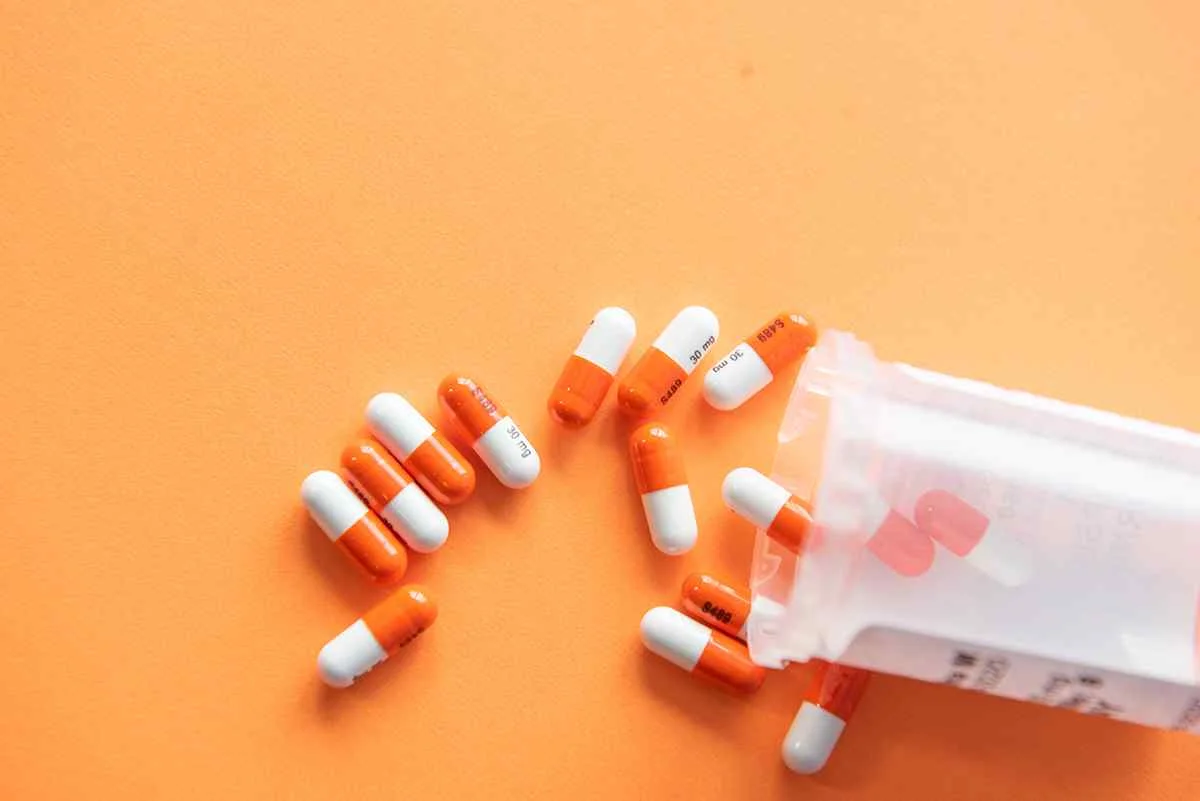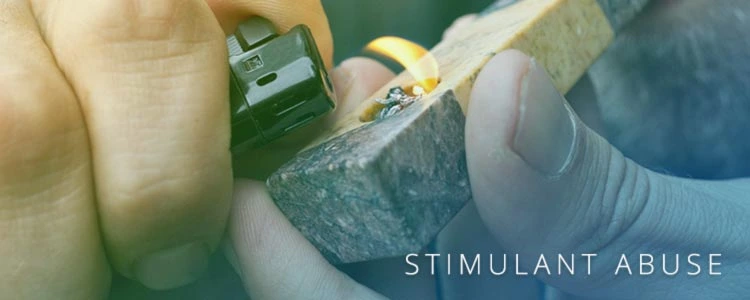Lisdexamfetamine
Lisdexamfetamine is a central nervous system stimulant used in the treatment of attention deficit hyperactivity disorder (ADHD).

Common Brand Names: Vyvanse
Lisdexamfetamine is a d-amphetamine prodrug that is classified as a Schedule II controlled substance under the federal drug scheduling system.This means that while the drug does have a legitimate medical application, it also has a high potential for abuse and dependence, and must be taken with caution.
Medical Applications of Lisdexamfetamine
Attention-Deficit Hyperactivity Disorder, or ADHD, is one of the most common neurodevelopmental disorders of childhood. Pharmacotherapy remains the cornerstone of ADHD management. There are two types of drugs used in ADHD: stimulants and non-stimulants. Stimulants, like lisdexamfetamine, are effective in about 70 percent of patients suffering from ADHD.
Aside from being prescribed for the treatment of ADHD symptoms in children and adults, lisdexamfetamine is also used to treat patients with binge eating disorder (BED).
Since individuals with ADHD may have other co-occurring conditions such as bipolar disorder, prescribing lisdexamfetamine should be done with caution. Otherwise, the patient may experience a mixed or manic episode.
Lisdexamfetamine has been engineered to reduce the likelihood of developing a dependency on the drug, even when it is misused by attempting to inject or inhale it. However, chronic use or misuse of this substance can still result in the development of lisdexamfetamine dependence and even substance use disorder.
How Lisdexamfetamine Is Abused or Misused
Similar to other stimulant medications, individuals may misuse or abuse lisdexamfetamine in order to experience the drug’s perceived beneficial effects. Some examples of how lisdexamfetamine is abused or misused include the following:
- Chewing on a lisdexamfetamine capsule
- Opening a lisdexamfetamine capsule and snorting its contents
- Crushing a lisdexamfetamine chewable tablet and snorting the resulting powder
- Opening a lisdexamfetamine capsule, mixing its contents into water or any other liquid, and injecting the resulting solution directly into the bloodstream
- Crushing a lisdexamfetamine chewable tablet, mixing the resulting powder into water or any other liquid, and injecting the resulting solution directly into the bloodstream
- Other unapproved routes of administration
Known Drug Interactions with Lisdexamfetamine
It is possible to experience serious side effects when taking lisdexamfetamine with other types of substances such as antidepressants. Examples of such substances that are known to interact with lisdexamfetamine include:
- Monoamine oxidase inhibitors (MAOIs): Concomitant intake of lisdexamfetamine with monoamine oxidase inhibitors (MAOIs) can cause a hypertensive crisis, a condition wherein one’s blood pressure becomes unusually high. Left unaddressed, this increase in blood pressure may lead to a stroke. Any person who has previously taken MAOIs within 14 days of taking lisdexamfetamine is also at risk of experiencing hypertensive crisis.
Some examples of MAOIs include:
- Isocarboxazid
- Phenelzine
- Selegiline
- Tranylcypromine
- Serotonergic drugs: Taking lisdexamfetamine with these types of medications can put a person at risk of developing serotonin syndrome. This is a potentially life-threatening condition wherein the body produces too much serotonin, causing serious symptoms such as:
- Abnormal movements of the eyes
- An increase in body temperature
- Diarrhea, nausea, and vomiting
- Hallucinations
- High blood pressure
- Loss of coordination
- Overactive reflexes
- Rapid heartbeat and changes in blood pressure
- Restlessness or agitation
Some examples of serotonergic drugs include:
- Buspirone
- Fentanyl
- Lithium
- Selective serotonin reuptake inhibitors (SSRI)
- Serotonin norepinephrine reuptake inhibitors (SNRI)
- St. John’s Wort
- Tramadol
- Tricyclic antidepressants
- Triptans
- Tryptophan
- CYP2D6 Inhibitors: Much like serotonergic drugs, using lisdexamfetamine with CYP2D6 inhibitors can make an individual more likely to experience serotonin syndrome. This is because, when taken with lisdexamfetamine, CYP2D6 inhibitors can potentially increase the exposure of the active metabolite of lisdexamfetamine known as dextroamphetamine.
Some examples of CYP2D6 inhibitors include:
- Fluoxetine
- Quinidine
- Paroxetine
- Ritonavir
- Alkalinizing agents: These types of medications can increase one’s blood levels, boosting the effects of lisdexamfetamine in the body.
Some examples of these drugs include urinary alkalinizing agents such as:
- Acetazolamide
- Some thiazides
- Acidifying agents: These kinds of drugs may lower one’s blood levels and decrease the efficacy of lisdexamfetamine.
Some examples of these medications include urinary acidifying agents such as:
- Ammonium chloride
- Methenamine salts
- Sodium acid phosphate
- Tricyclic antidepressants: When taken with lisdexamfetamine, these types of substances can potentially boost the activity of sympathomimetic or tricyclic agents. This, in turn, can result in significant and sustained increases of d-amphetamine concentrations in the brain and can amplify the cardiovascular effects caused by lisdexamfetamine.
Some examples of tricyclic antidepressants include:
- Desipramine
- Protriptyline
Immediate Side Effects of Lisdexamfetamine
Generally speaking, the most common side effects you may experience after taking lisdexamfetamine include:
- Constipation
- Diarrhea
- Dizziness
- Dry mouth
- Headache
- Nausea
- Sleepiness
- Weight loss
Some individuals may experience more severe side effects, such as the following:
- Abrupt shifts in mood
- Bluish coloring or paleness in the toes or fingers
- Difficulty speaking or speaking more slowly than usual
- Numbness or weakness in the limbs
- Pain, numbness, or sensitivity to temperature in the toes or fingers
- Paranoia
- Hallucinations
- Delusions
- Rashes or hives
- Seizures
- Swelling of the lips, mouth, tongue, eyes, or face
- Unexplained wounds that appear on your toes or fingers
- Verbal or motor tics
- Vision problems, such as blurred vision
Should you experience any of the more serious side effects, immediately contact your doctor or call 911 to prevent any further complications.
Long-Term Side Effects of Lisdexamfetamine Use
A U.S. study conducted between July 2006 and November 2007 found that regular use of lisdexamfetamine over a period of 12 months can cause the following adverse effects:
- Decreased appetite
- Dry mouth
- Headache
- Insomnia
- Irritability
- Upper respiratory tract infection
In addition to the above-mentioned long-term effects, chronic use of lisdexamfetamine was also found to contribute to small but statistically significant increases in blood pressure and pulse.
Another study conducted in Europe found that, when used over a period of two years, chronic long-term use of lisdexamfetamine may cause the following symptoms:
- Anorexia
- Decreased appetite
- Headache
- Insomnia
- Weight loss
As with the previously cited U.S. study, increases in mean pulse and blood pressure were also observed among some of the research participants in the European study. Additionally, suppressed growth and relative losses in BMI, height, and weight were observed in children with ADHD who took lisdexamfetamine for a period of 15 months.
Symptoms of Lisdexamfetamine Overdose
In addition to the symptoms listed above, an overdose of this medication can manifest with other more serious adverse effects such as:
- Aggressive behavior
- Coma
- Confusion
- Depression
- Diarrhea and stomach cramps
- Fast or irregular heartbeats
- Fatigue
- Fever
- Hallucinations
- Muscle aches or weakness
- Nausea or vomiting
- Panic
- Rapid breathing
- Restlessness
- Seizures
- Tremors
Should you experience any combination of the above symptoms, this means that you’ve likely overdosed on lisdexamfetamine. Contact your doctor, local emergency services, or 911 immediately for medical assistance.
Observable Signs That Someone Is Addicted to Lisdexamfetamine
When lisdexamfetamine is misused for a very long time, a person can develop an addiction to the substance. Left unaddressed, a stimulant use disorder can cause an individual’s interpersonal relationships and academic or professional performance to suffer. These negative effects on their life can lead the struggling individual to use more lisdexamfetamine to ease their feelings of anxiety or stress, feeding into a vicious cycle of substance use disorder.
The Fifth Edition of the Diagnostic and Statistical Manual of Mental Disorders (DSM-5) contains 11 criteria for determining whether a person has a substance use disorder (SUD). These pathological behaviors are found in people who chronically misuse or abuse drugs, and as such, these criteria also apply to people with lisdexamfetamine use disorder. The 11 behavioral patterns that may indicate a stimulant addiction are the following:
- Taking lisdexamfetamine in much higher amounts or for longer than intended
- Wanting to reduce or stop the use of lisdexamfetamine, yet failing
- Spending an inordinate amount of time getting, using, or recovering from the use of lisdexamfetamine
- Getting intense cravings or urges to use lisdexamfetamine
- Continuing to take lisdexamfetamine even if it causes you to fail at managing your commitments
- Continuing to take lisdexamfetamine despite it causing interpersonal problems
- Missing out on important activities because of taking lisdexamfetamine
- Continuing to take lisdexamfetamine, even if doing so can put you in harm’s way
- Continuing to take lisdexamfetamine despite it worsening any physical and psychological problems you may already have
- Needing more lisdexamfetamine to achieve its desired effects ( lisdexamfetamine tolerance)
- Developing withdrawal symptoms when you suddenly stop using lisdexamfetamine or don’t take enough of it
Lisdexamfetamine Withdrawal Symptoms
If you’ve been taking lisdexamfetamine for too long or in very high amounts, you’ll be more likely to develop a dependence on the substance. Becoming dependent on lisdexamfetamine means that if you suddenly stop taking it for any reason, you may experience withdrawal symptoms such as depression and extreme fatigue.
That being said, it’s entirely possible to develop withdrawal symptoms even if you don’t necessarily have a lisdexamfetamine addiction. This is because, even if you’ve been taking it as prescribed by your doctor, you can still develop a dependence on the medication as long as you’ve been using it regularly over several months or years.
With that in mind, what’s the main difference between dependence and addiction? In simpler terms, developing a dependence on lisdexamfetamine simply means that you’ve become used to the presence of the medication in your body.10 On the other hand, being addicted to lisdexamfetamine means that you’ve become unable to stop using the medication even though you know it puts you in harm’s way or negatively impacts various aspects of your life.
Should you notice yourself experiencing any of the above-listed withdrawal symptoms, make sure to get in touch with your doctor regarding lisdexamfetamine detox programs. Such programs can help you slowly remove traces of the drug from the body while minimizing the more serious withdrawal symptoms.
The Lisdexamfetamine Detoxification Process
For many people, experiencing lisdexamfetamine withdrawal can be terrifying. If you’re caught unprepared by the above-mentioned withdrawal symptoms, you’ll be at a much higher risk of using more of the drug, and it’ll be more difficult for you to break free from your dependence on the drug.
The good news is that you don’t have to endure these withdrawal symptoms alone. There are many facilities that provide lisdexamfetamine detoxification programs, staffed with medical professionals that can help you safely wean yourself off of the stimulant.
Depending on the severity of your symptoms and the degree of drug dependence, you may undergo any of the following:
- With the help of a medical team, you will be provided with a tapering schedule to gradually decrease the amount of lisdexamfetamine in your body. More often than not, this process can ease the most painful or debilitating withdrawal symptoms.
- To ensure that you still meet your caloric and nutritional needs, your medical team may give you IV fluids and nutritional supplements if deemed necessary.
- In case you experience withdrawal-related symptoms such as insomnia and dysphoria, you will be provided with psychological and medical treatment.
- During your entire stay at the detox facility, you will be given round-the-clock supervision and care.
Treatment Options for Lisdexamfetamine Addiction
When it comes to treating lisdexamfetamine use disorder, rehabilitation programs have shown to be highly effective in terms of preventing relapse and developing healthier coping strategies. Since drug use disorders affect the structure and function of the brain, sticking to a treatment plan may be challenging. Still, undergoing such treatment is necessary in order to improve a struggling individual’s quality of life.
If you think that you may have become addicted to lisdexamfetamine and need help in pursuing sobriety, it may be in your best interest to seek professional assistance at a nearby treatment center. There, you can consult trained medical staff on what the best course of action would be for your specific case.
In most cases, individuals struggling with substance use disorder are asked to undergo an addiction treatment program to address the root causes of their condition. Broadly speaking, you can expect rehabilitation programs for lisdexamfetamine use disorder to be conducted in one of two main settings:
- Inpatient lisdexamfetamine addiction treatment: Inpatient rehab is usually recommended for patients with a high risk of relapse, co-occurring health or mental conditions, or a poor support system. You will be asked to live at an assigned treatment center for a certain period of time, and you will have access to round-the-clock medical care for the entire duration of your stay. There, you will be provided with a more structured environment to help you recover from lisdexamfetamine use disorder safely and comfortably.
- Outpatient lisdexamfetamine addiction treatment: Because outpatient rehab is only recommended for patients with a low risk of relapse, you won’t need to be supervised 24/7 by a team of medical professionals. Instead, you’ll be allowed to continue living at home as long as you attend regular counseling and therapy sessions at an assigned treatment center. This means that you will have the freedom to continue your usual daily activities, whether that’s going to work, attending classes at school, spending time with friends or family, or pursuing your hobbies.
Lisdexamfetamine addiction treatment programs often implement a multimodal approach to help patients successfully recover from the negative effects of substance use disorder. Indeed, different types of psychotherapy such as individual therapy, group therapy, and family therapy have been found to aid patients in adhering to their medical treatments as well as developing healthy coping and life skills.
This is because incorporating behavioral and psychosocial interventions into addiction treatment has been shown to not only decrease a person’s risk for relapse, but also speed up their recovery. Additionally, a combination of pharmacological and psychological treatment has shown to be more effective compared to the application of either pharmacological or psychological treatment alone.
Call Our Helpline Today to Start Your Journey to Recovery
If you think that you or a loved one may be using lisdexamfetamine more than necessary or longer than intended, don’t hesitate to call (800) 429-7690. Our recovery support advisors will be right with you to guide you in finding the most appropriate and cost-effective treatment plan for your needs.
Should you have an insurance plan you wish to verify, our advisors will also help you figure out what level of addiction treatment insurance coverage you can expect to receive. In case you don’t have insurance, don’t worry; they’ll work with you to find other ways of paying for your addiction treatment program and finding treatment facilities.
A Brief History of Lisdexamfetamine
In 2007, lisdexamfetamine was approved for the treatment of ADHD in children between the ages of six to 12. A year later, the drug became the first FDA-approved once-daily prodrug stimulant for the treatment of adults with ADHD.13 In 2018, lisdexamfetamine ranked as the 106th most prescribed drug in the U.S.







